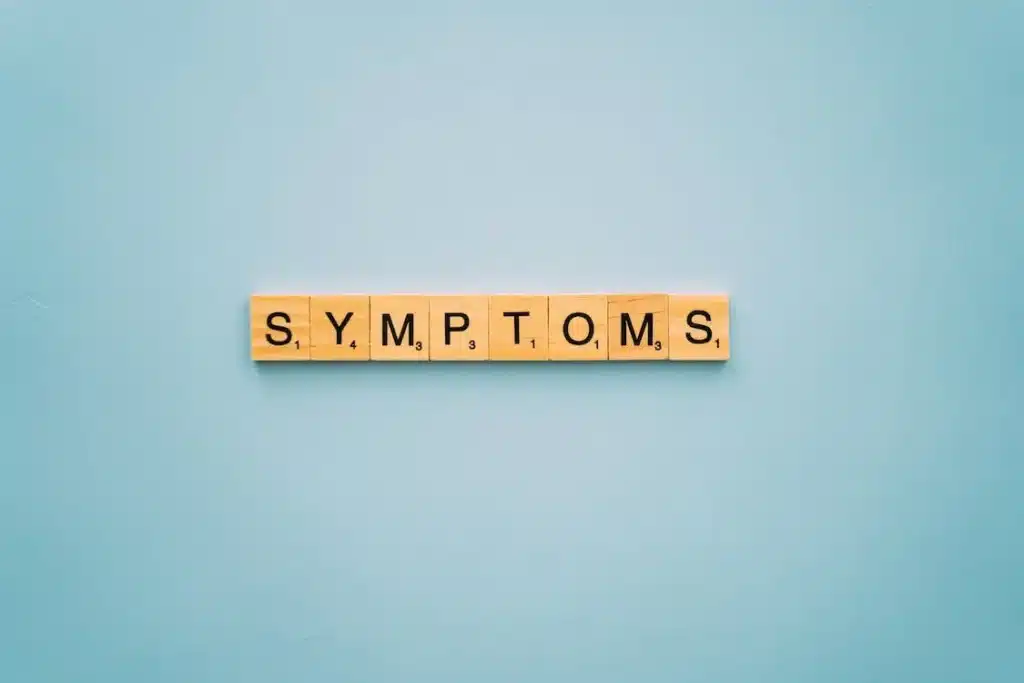High Blood Pressure Symptoms, Causes, and Problems

Blood pressure is a common condition that affects millions of people worldwide. It is the force that the blood exerts against the walls of the blood vessels, and it is an essential measurement of a person’s overall health. In this article, we will explore what blood pressure is and why it is important to understand it for maintaining good health.
Contents
- 1 High Blood Pressure Symptoms, Causes, and Problems
- 2 What is Blood Pressure?
- 3 Understanding Blood Pressure Numbers
- 4 The Dangers of High Blood Pressure
- 5 Symptoms of High Blood Pressure
- 6 Health Problems Associated with High Blood Pressure
- 7 Blood Pressure Changes Throughout the Day
- 8 Treating High Blood Pressure
- 9 Final Words
What is Blood Pressure?
Blood pressure is the measurement of the force of blood pushing against the walls of the blood vessels. It is typically expressed in two numbers, with the systolic pressure on the top and the diastolic pressure on the bottom.
Systolic pressure measures the force of blood when the heart beats, while diastolic pressure measures the force of blood when the heart is at rest between beats. Normal blood pressure is usually around 120/80 mmHg, while high blood pressure, or hypertension, is defined as having a reading consistently above 130/80 mmHg.
Blood pressure is an essential measurement to monitor for the prevention of serious health problems such as heart attack, stroke, and chronic kidney disease. Regular blood pressure checks and understanding the significance of the numbers are key to maintaining good health.
Understanding Blood Pressure Numbers

Blood pressure is typically measured in millimeters of mercury (mm Hg). According to the American College of Cardiology, a healthy blood pressure reading for most adults is less than 120/80 mm Hg. However, there are different categories of blood pressure levels, including:
- Normal blood pressure (systolic pressure less than 120 mm Hg and diastolic pressure less than 80 mm Hg)
- Elevated blood pressure (systolic pressure between 120-129 mm Hg and diastolic pressure less than 80 mm Hg)
- Stage 1 hypertension (systolic pressure between 130-139 mm Hg or diastolic pressure between 80-89 mm Hg)
- Stage 2 hypertension (systolic pressure 140 mm Hg or higher, or diastolic pressure 90 mm Hg or higher)
It is important to understand your blood pressure numbers and work with your healthcare provider to maintain healthy levels.
The Dangers of High Blood Pressure

High blood pressure, also known as hypertension, is a serious medical condition that can lead to a range of health problems. When left untreated, it can cause heart failure, brain, chronic kidney disease, and other organs, and increase the risk of heart attack, stroke, and other cardiovascular diseases.
One of the main dangers of high blood pressure is that it often has no symptoms, so many people may not even be aware that they have it. This is why it is often referred to as a “silent killer“. Without regular blood pressure checks, it can go undetected for years and cause damage to the body.
It is crucial to take steps to manage and control high blood pressure, such as maintaining a healthy diet, regular exercise, reducing stress, and taking medication if prescribed by a doctor. If left unmanaged, high blood pressure can be life-threatening.
Symptoms of High Blood Pressure

As I told you before high blood pressure, also known as hypertension, is often called the “silent killer” because it may not present any noticeable symptoms until it reaches a dangerous level. However, there are certain symptoms that may indicate high blood pressure, and it is essential to be aware of them for early detection and treatment.
Some common symptoms of high blood pressure include headaches, dizziness, chest pain, shortness of breath, and vision problems. In severe cases, high blood pressure can cause nosebleeds, nausea, vomiting, and confusion.
It is important to note that these symptoms may not always be related to high blood pressure and may be caused by other medical conditions. That’s why regular blood pressure check-ups are necessary to identify and manage high blood pressure.
If you experience any of these symptoms or are concerned about your blood pressure, make sure to consult a healthcare professional immediately for proper diagnosis and treatment.
Monitoring Blood Pressure
It is important to have your blood pressure checked regularly, especially if you are at risk for high blood pressure or have a family history of hypertension. Your healthcare provider can help you develop a treatment plan to maintain healthy blood pressure levels.
Having an understanding of your blood pressure changes can help you identify if there are any deviations from the normal range. High or low blood pressure levels can indicate serious health problems, such as heart disease, stroke, or kidney failure. If you notice any abnormal changes in your blood pressure readings, it is important to consult a healthcare professional for further evaluation and treatment.
Regular monitoring of blood pressure is easy and can be done at home using a blood pressure monitor or at a healthcare facility. By tracking your blood pressure over time, you can keep your health in check and prevent any potential health problems.
Understanding Systolic and Diastolic Blood Pressure
Blood pressure is measured in two numbers, systolic and diastolic pressure. The systolic pressure measures the force of blood against the artery walls when the heart beats, while the diastolic pressure measures the same when the heart is at rest between beats. Both are important to understand, as they can indicate different things about a person’s health.
When the systolic blood pressure is consistently above 130 and the diastolic pressure is above 80, it may be a sign of cardiovascular disease, also known as hypertension. This condition can lead to serious health problems, including heart attacks, stroke, and kidney disease. It is important to monitor blood pressure regularly to catch any changes in blood pressure levels early and address them promptly.
Symptoms of high blood pressure may not always be noticeable, but it can cause headaches, shortness of breath, and nosebleeds in some cases. In adults, high blood pressure can be caused by factors such as obesity, lack of exercise, and a poor diet. Diabetes patients may also be at higher risk for developing high blood pressure. It is important for individuals to be aware of their blood pressure and work with their healthcare provider to manage it effectively.
Understanding Normal Blood Pressure
Normal blood pressure is the ideal range of blood pressure that a person should have to maintain good health. It is a crucial indicator of cardiovascular health and is measured in millimeters of mercury (mm Hg). The normal blood pressure range is typically defined as a systolic pressure reading of less than 120 mm Hg and a diastolic pressure reading of less than 80 mm Hg.
Having normal blood pressure means that the heart is functioning effectively, and the blood vessels are carrying enough oxygen and nutrients to the body’s tissues. It is essential to understand what constitutes normal blood pressure and take measures to maintain it through a healthy lifestyle and regular monitoring.
The Role of Blood Flow
Blood flow is a vital concept in the human body that requires deeper understanding. It is responsible for transporting oxygen and nutrients to the organs and tissues throughout the body, allowing them to function properly. The concept of enough blood flow is crucial because insufficient blood flow can lead to serious health problems.
This includes high blood pressure, which can cause damage to blood vessels and organs. Diabetes patients are particularly susceptible to issues with blood flow, as high blood sugar levels can damage blood vessels and reduce circulation. By understanding the role of blood flow and monitoring it regularly, individuals can take proactive steps to maintain their overall health.
The Importance of Mutual Understanding
A mutual understanding of blood pressure is crucial for maintaining good health. It is essential to know what blood pressure is, how it is measured, and what the numbers mean. By understanding blood pressure, we can take steps to manage it and prevent serious health problems. Regular monitoring and communication with healthcare providers can ensure a mutual understanding of blood pressure and promote a healthy lifestyle.
Health Problems Associated with High Blood Pressure

High blood pressure, also known as hypertension, can lead to a variety of health problems if left untreated. These health problems can range from mild to severe and may include:
Cardiovascular disease: This is the most common health problem associated with high blood pressure. High blood pressure puts a strain on the heart and blood vessels, which can lead to heart attack, stroke, and other cardiovascular diseases.
Kidney disease: High blood pressure can damage the kidneys and lead to kidney disease or kidney failure.
Eye damage: The blood vessels in the eyes can be damaged due to high blood pressure, which can lead to vision problems or even blindness.
Cognitive decline: High blood pressure has been linked to cognitive decline and an increased risk of dementia.
Sexual dysfunction: High blood pressure can cause erectile dysfunction in men and a decreased sex drive in women.
It is important to manage high blood pressure to prevent these health problems and maintain good overall health.
Blood Pressure Changes Throughout the Day
Blood pressure is not a constant value and can change throughout the day. It is affected by various factors such as physical activity, stress, and even the time of day. Blood pressure tends to be lower during sleep and increases upon waking up in the morning. It can also increase temporarily after eating, smoking, or drinking alcohol.
Understanding these fluctuations in blood pressure is important for monitoring overall cardiovascular health. By taking regular blood pressure readings at different times of the day, healthcare providers can get a better idea of a patient’s average blood pressure and make appropriate recommendations for lifestyle changes or medical treatments to maintain healthy blood pressure levels.
Treating High Blood Pressure

Treating high blood pressure typically involves lifestyle changes, such as a healthy diet, regular exercise, and stress reduction techniques. In addition, medication may be prescribed to help lower blood pressure. It is important to work closely with a healthcare provider to find the right combination of lifestyle changes and medications to effectively manage high blood pressure.
Failure to manage high blood pressure can lead to serious health complications, such as heart disease, stroke, and kidney damage. Regular monitoring of blood pressure levels and adherence to treatment plans can greatly improve overall health outcomes.
Final Words

In conclusion, blood pressure is an important measure of overall health and should be monitored regularly. Understanding systolic and diastolic pressure, normal blood pressure levels, and the potential dangers of high blood pressure can help individuals take proactive steps to maintain good health.
Common causes of high blood pressure should also be considered, and lifestyle changes, such as regular exercise and a healthy diet, can be effective in preventing and treating high blood pressure. If necessary, medications may also be prescribed by a healthcare professional. By staying informed and taking action to manage blood pressure, individuals can reduce their risk of serious health problems and improve their quality of life.
1 thought on “Understanding Blood Pressure”